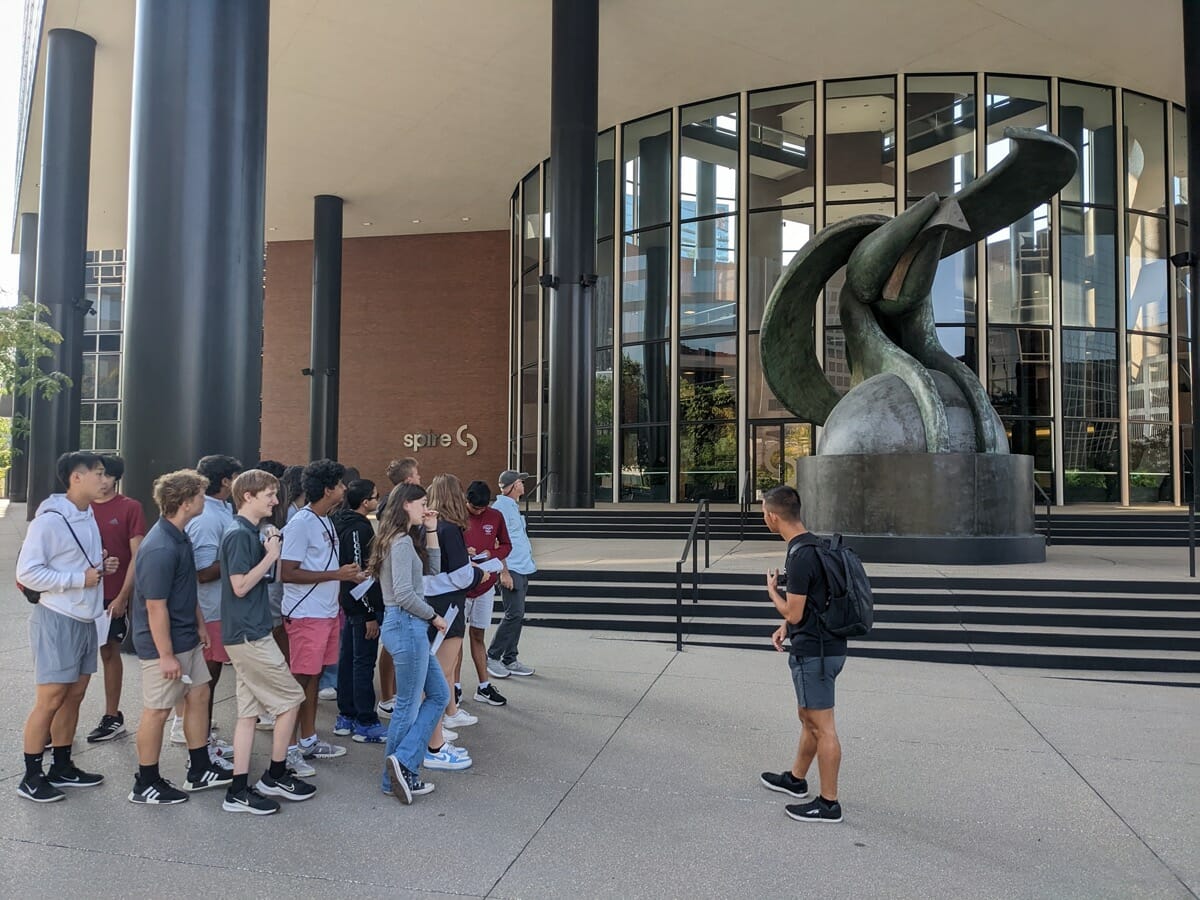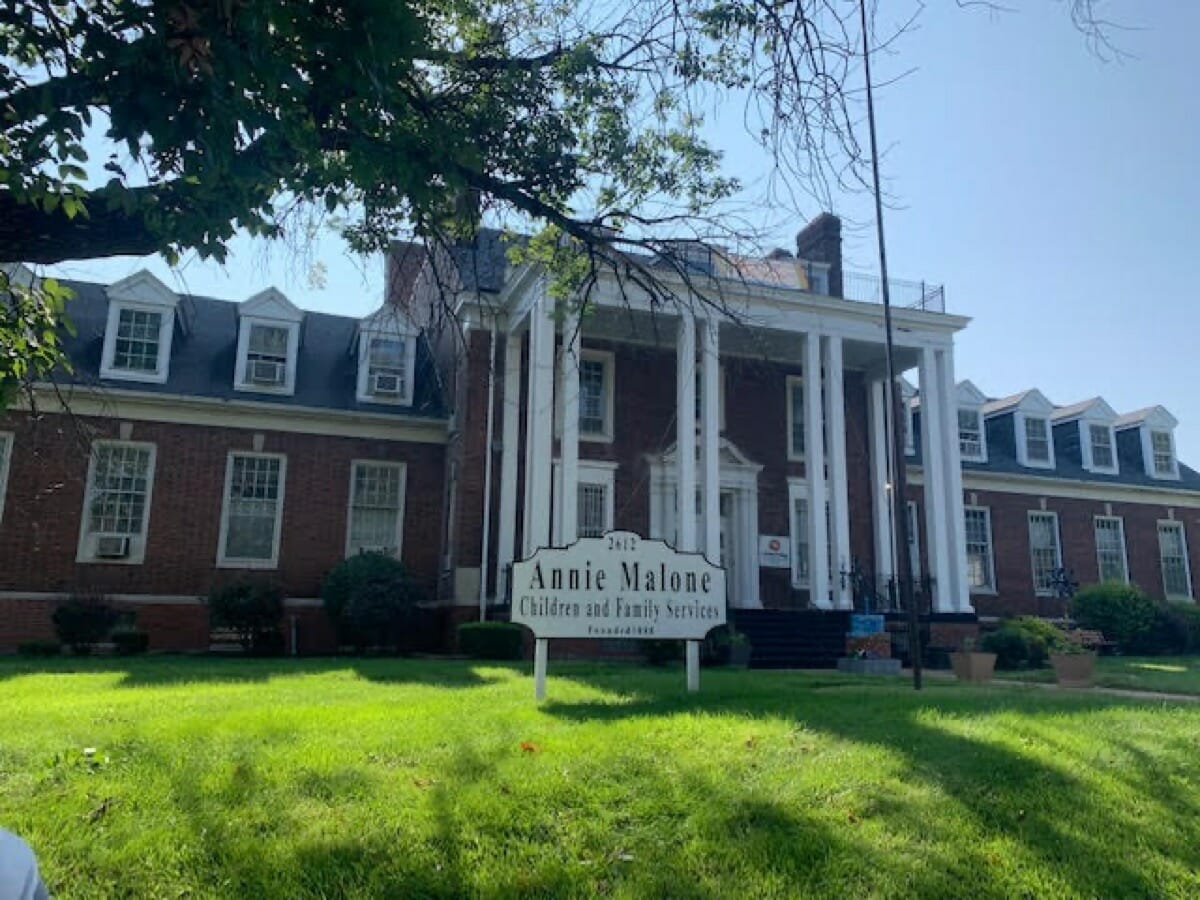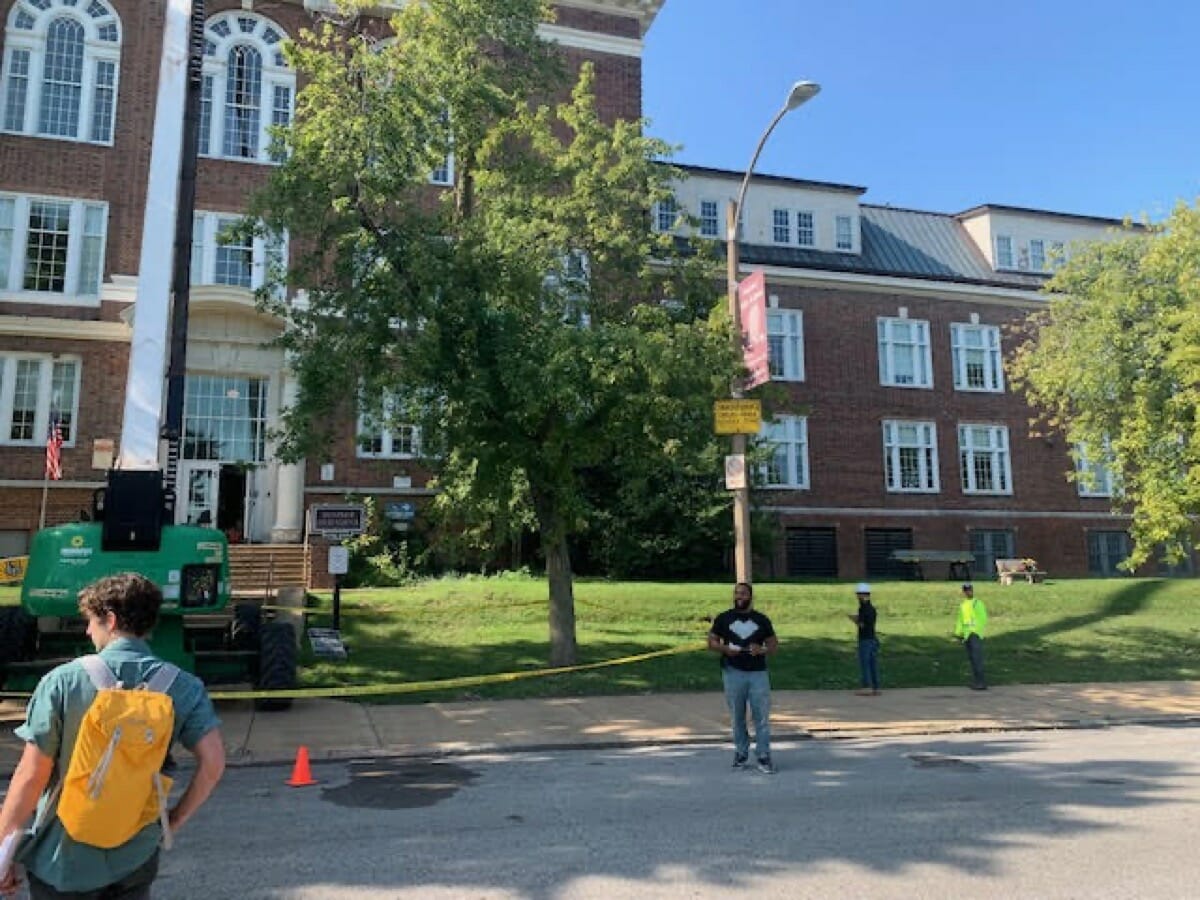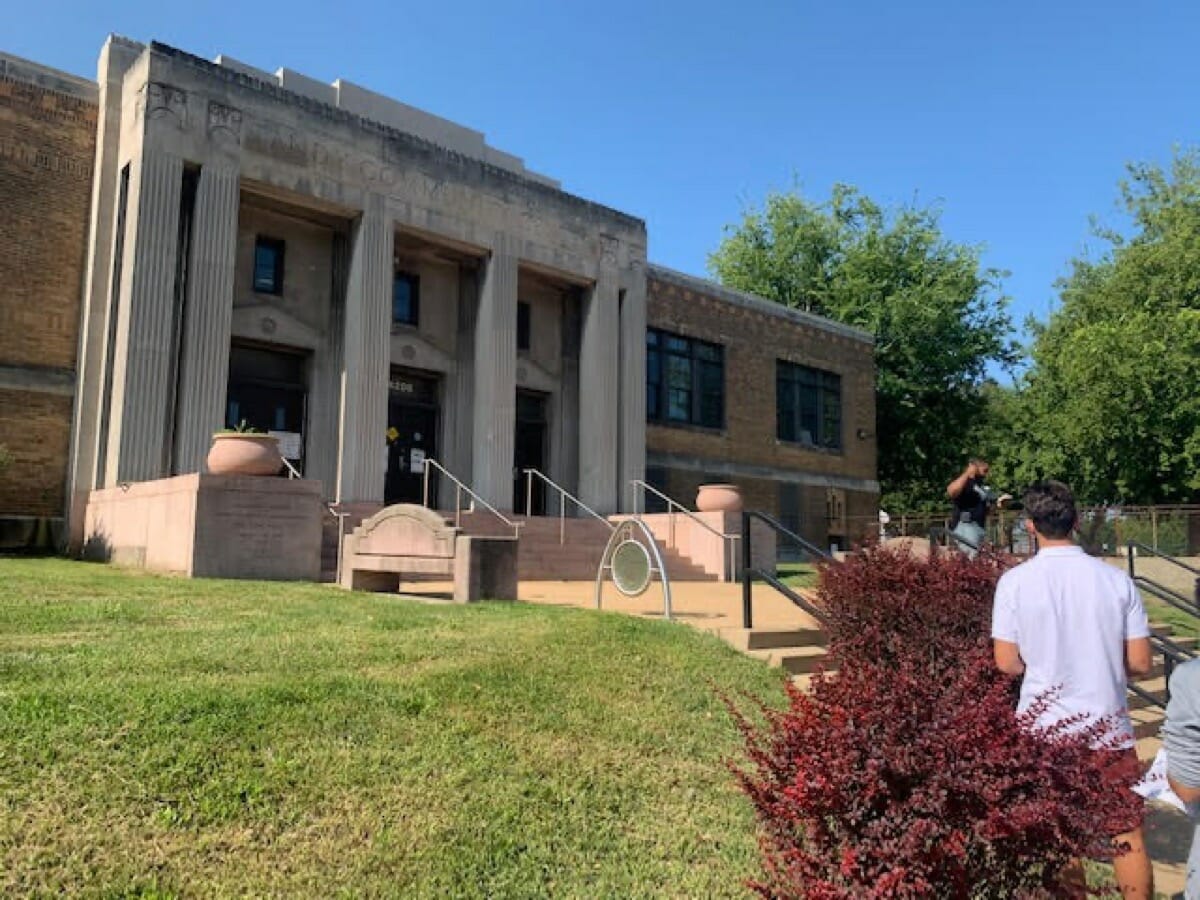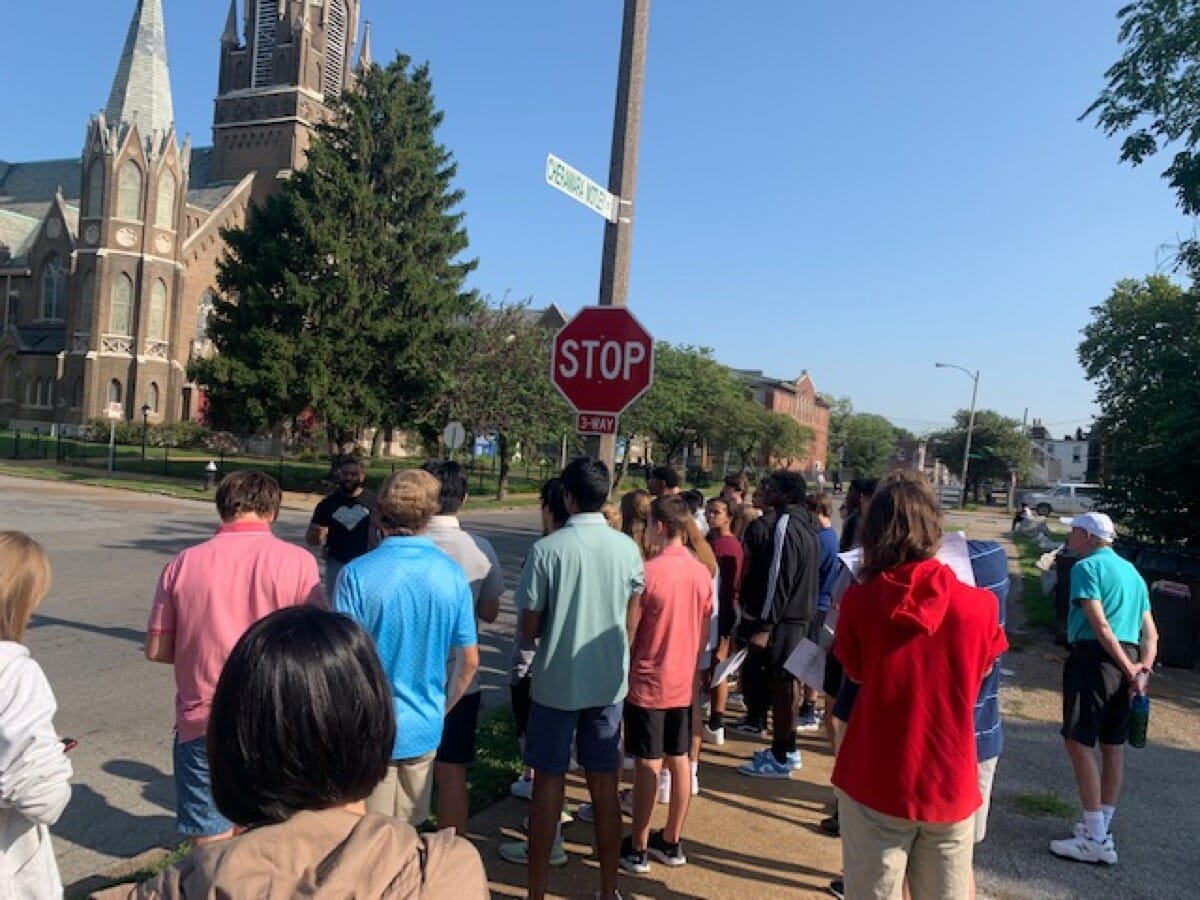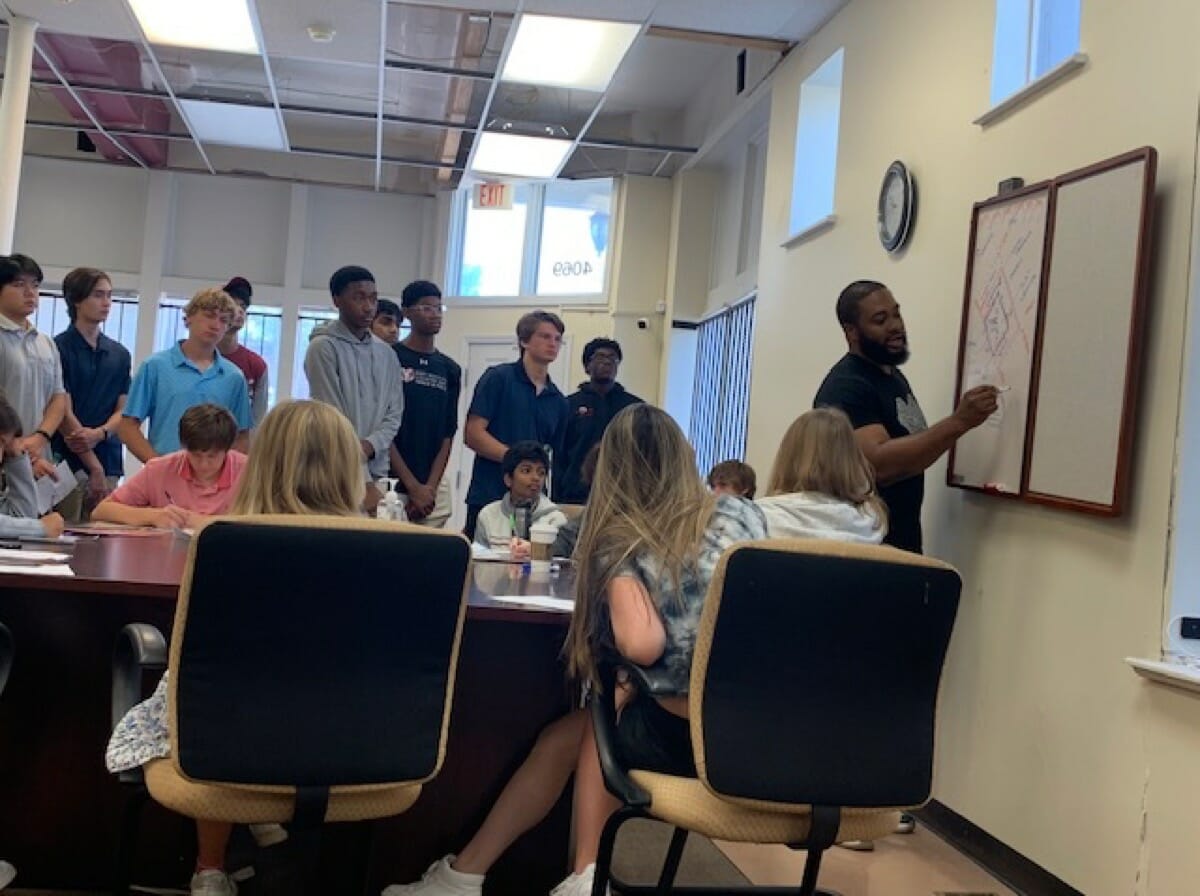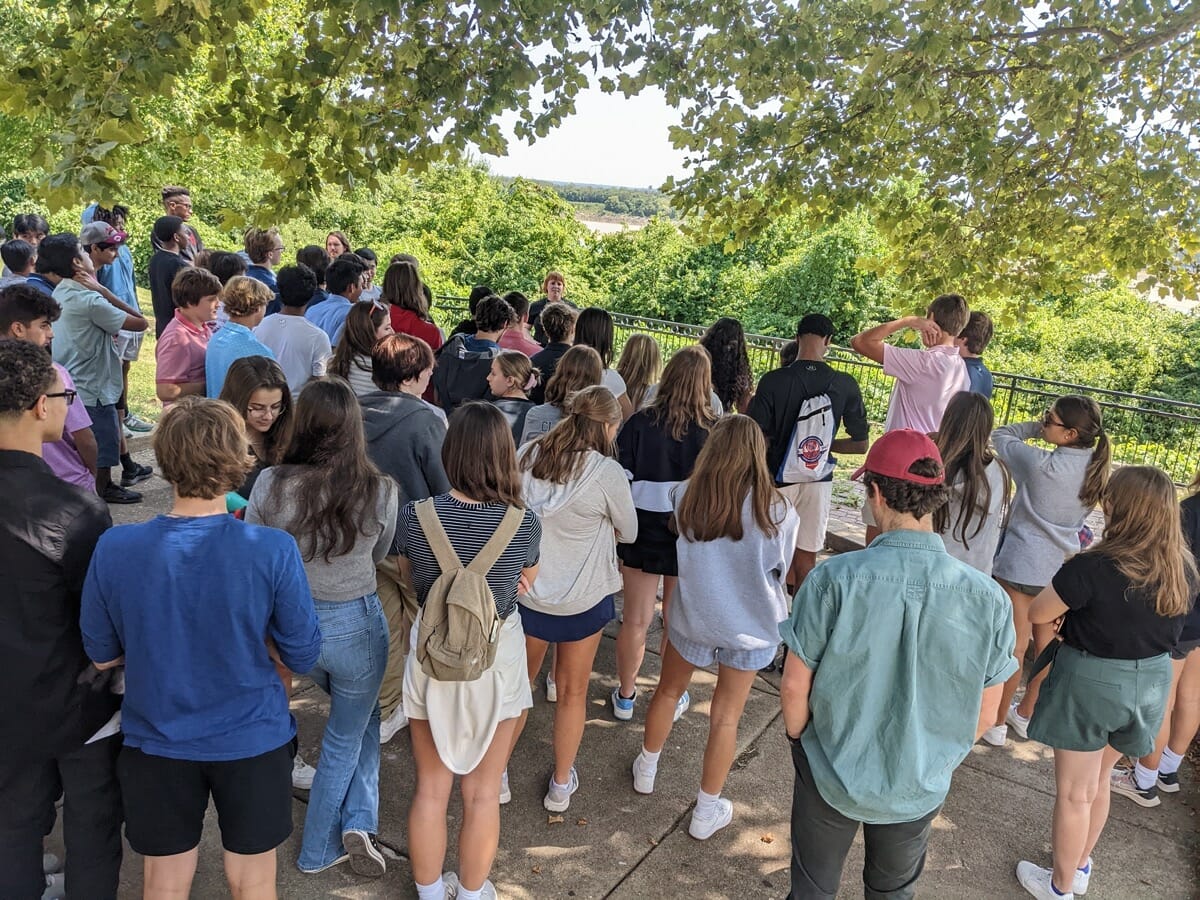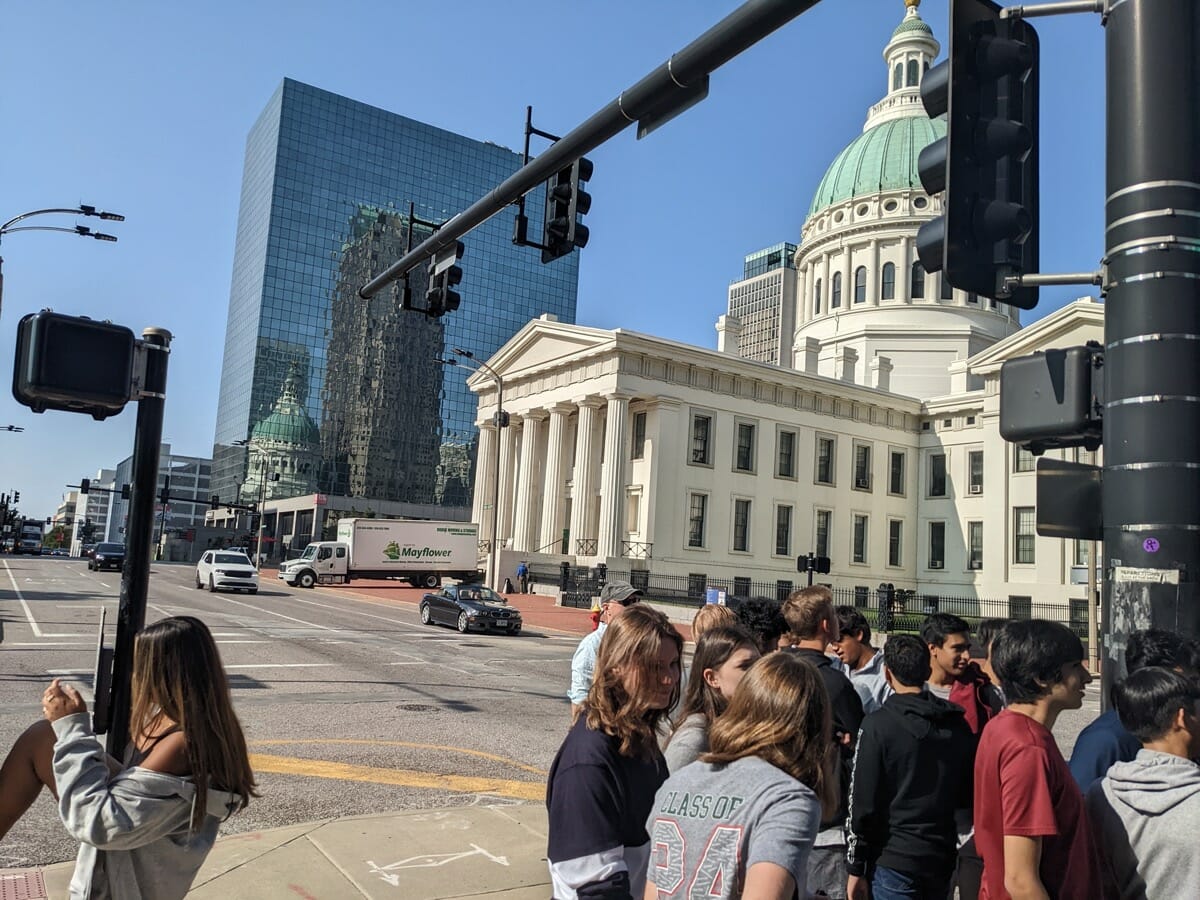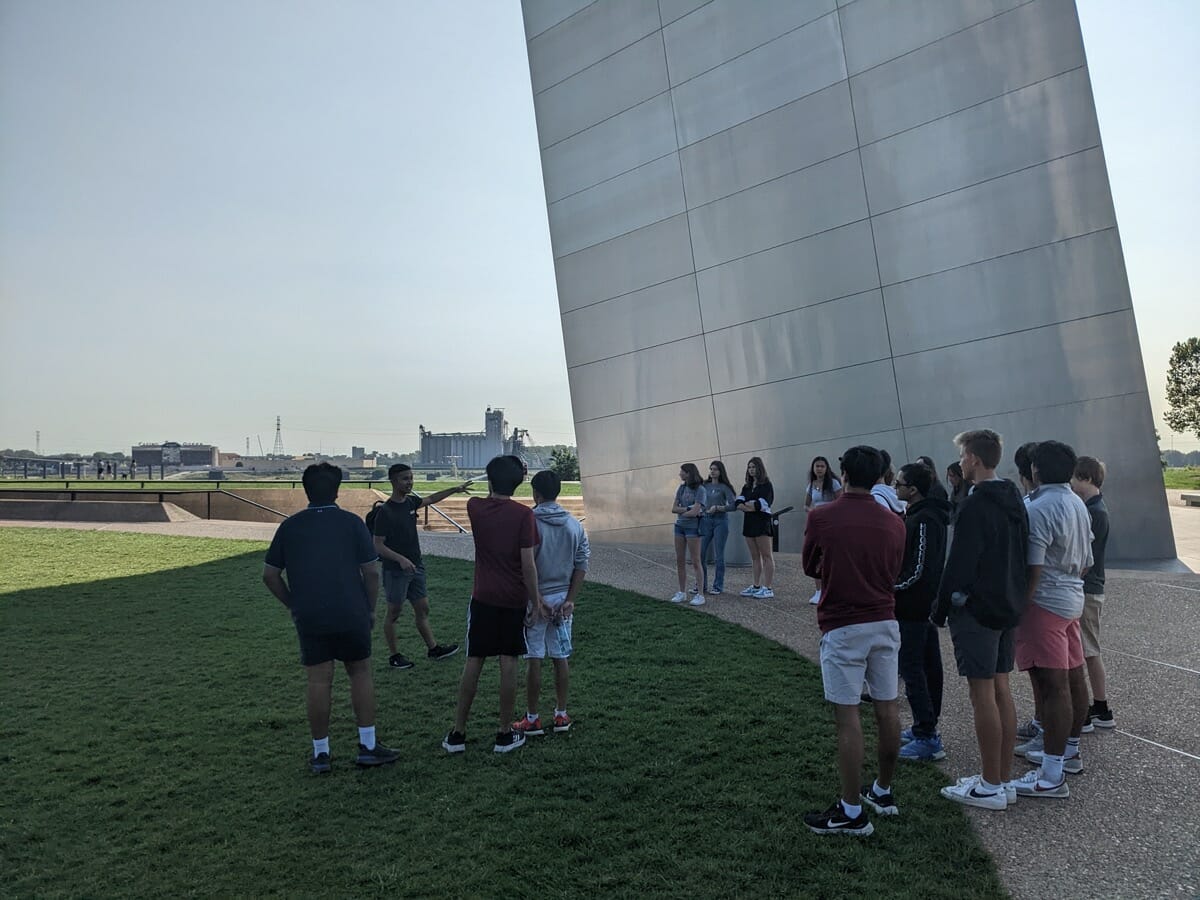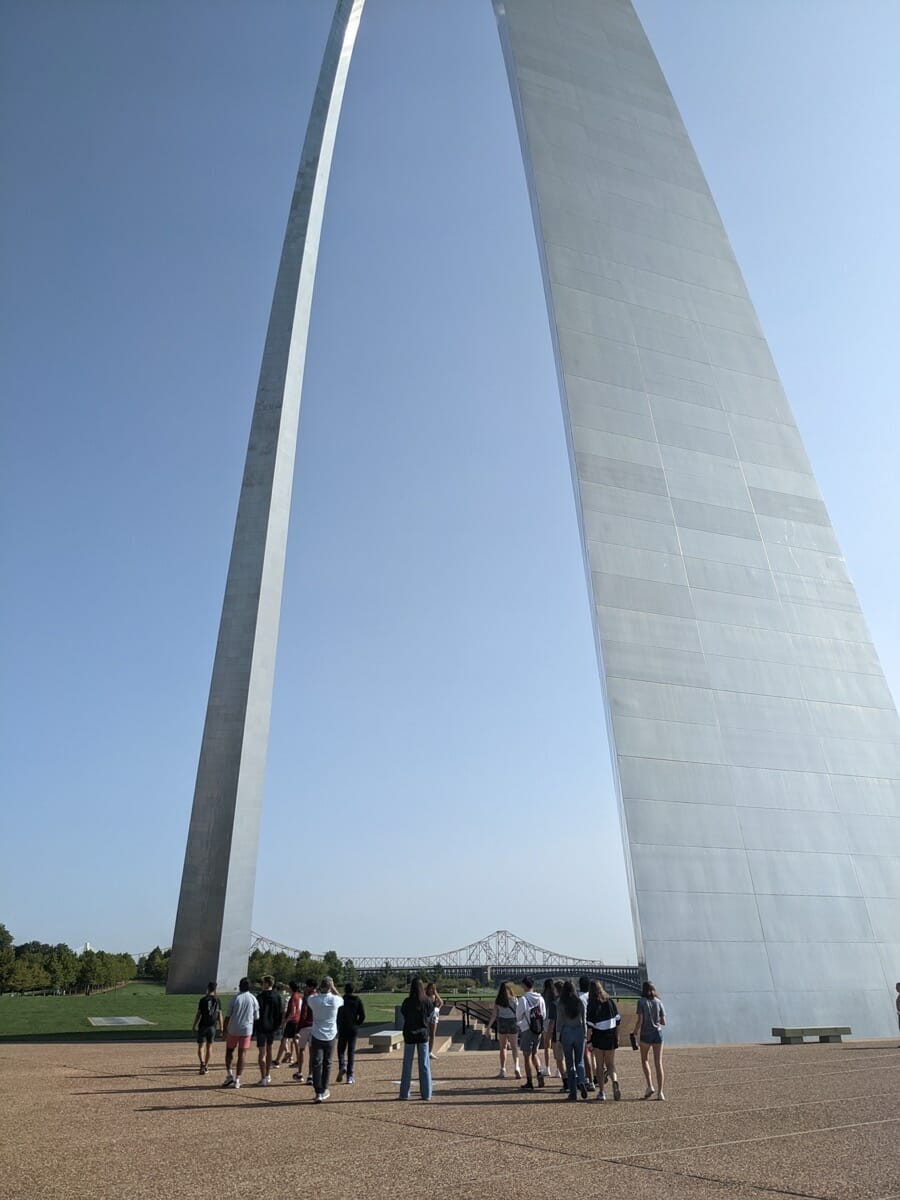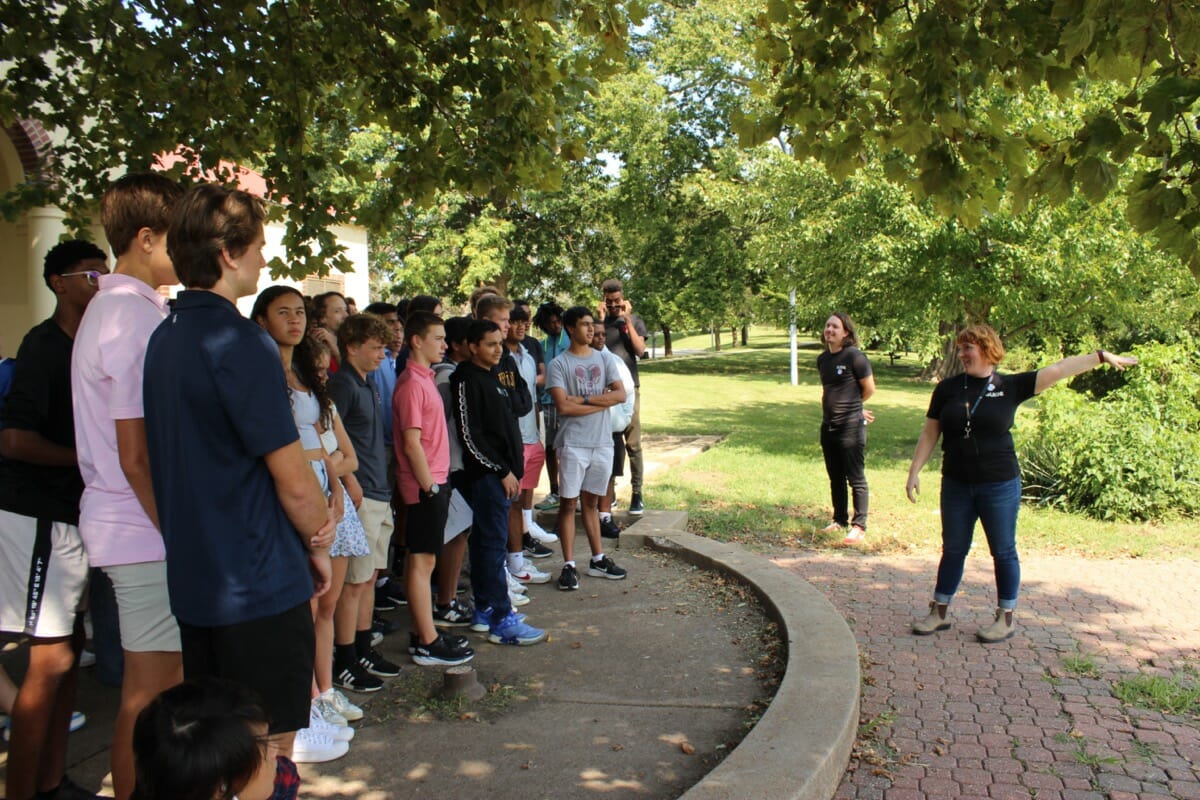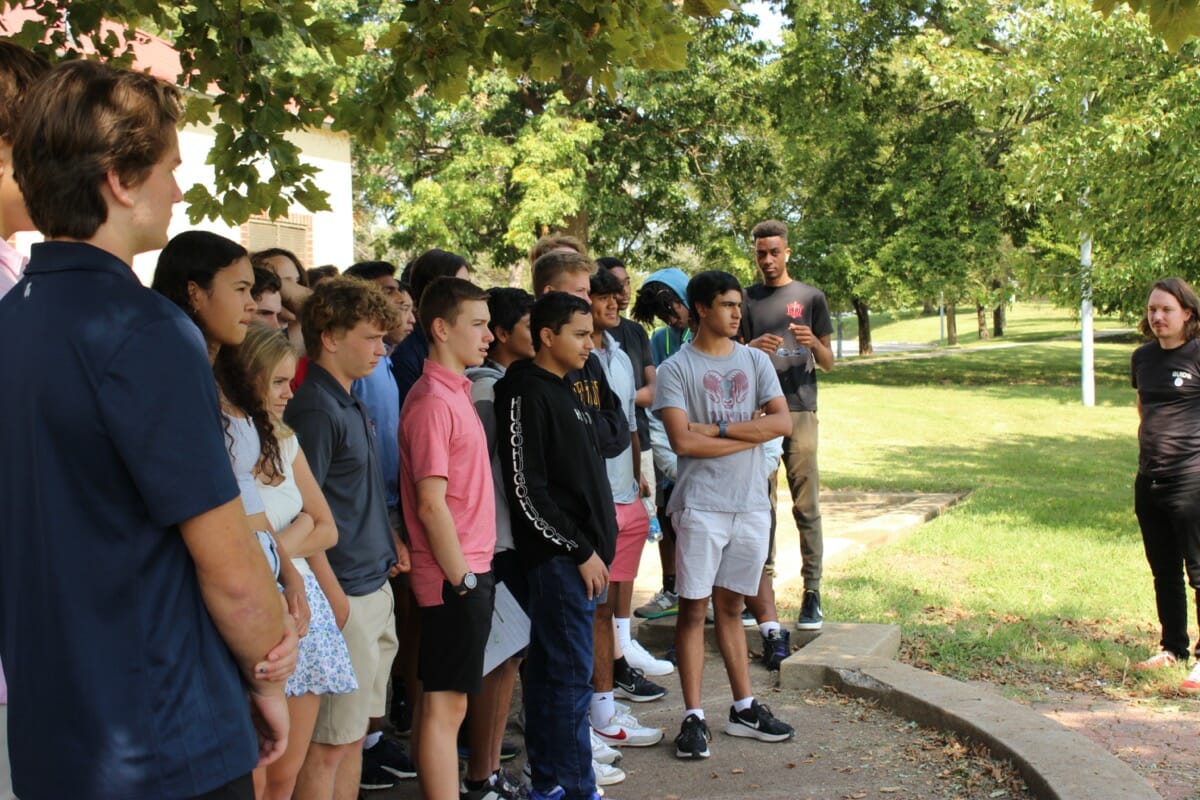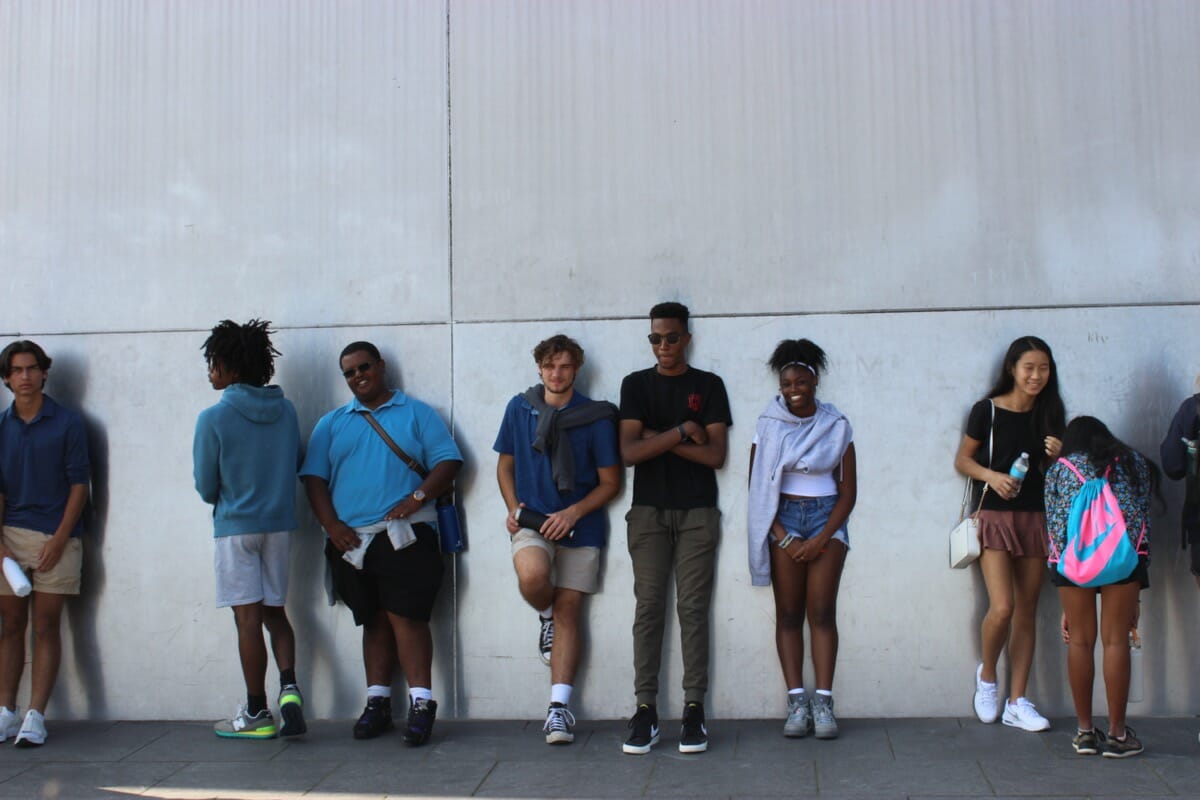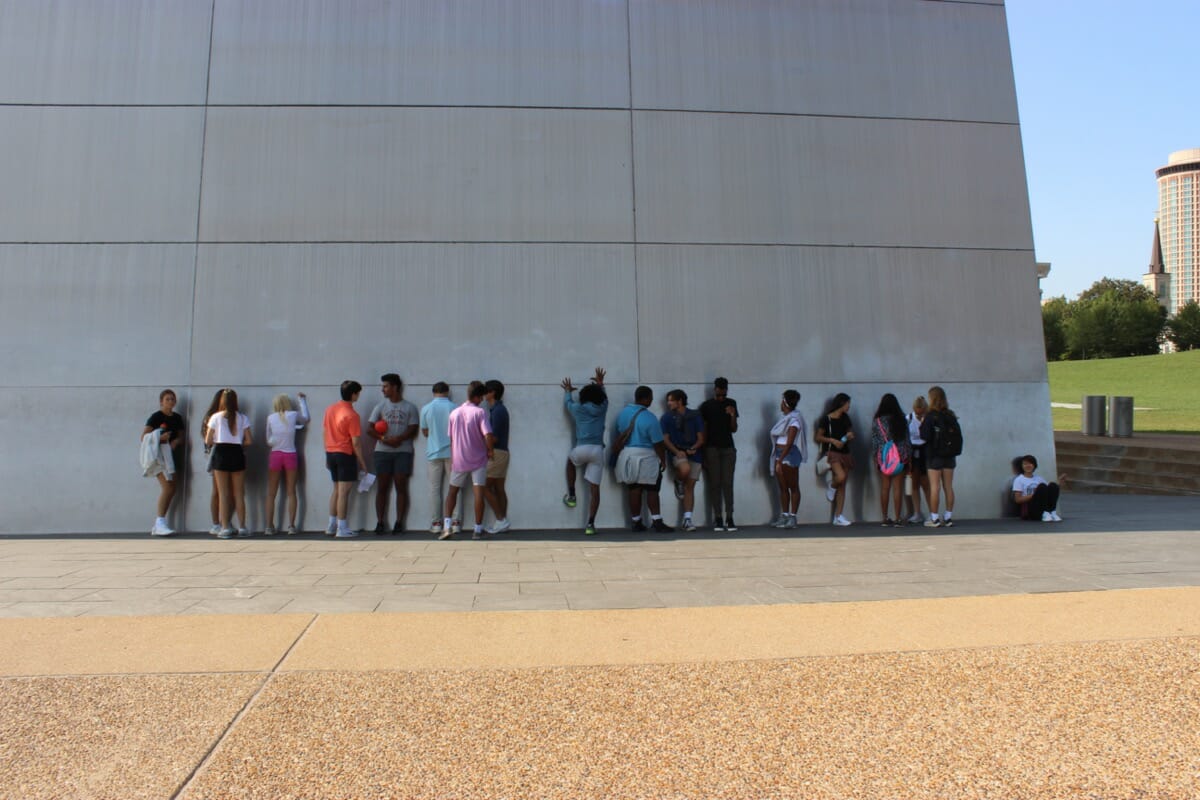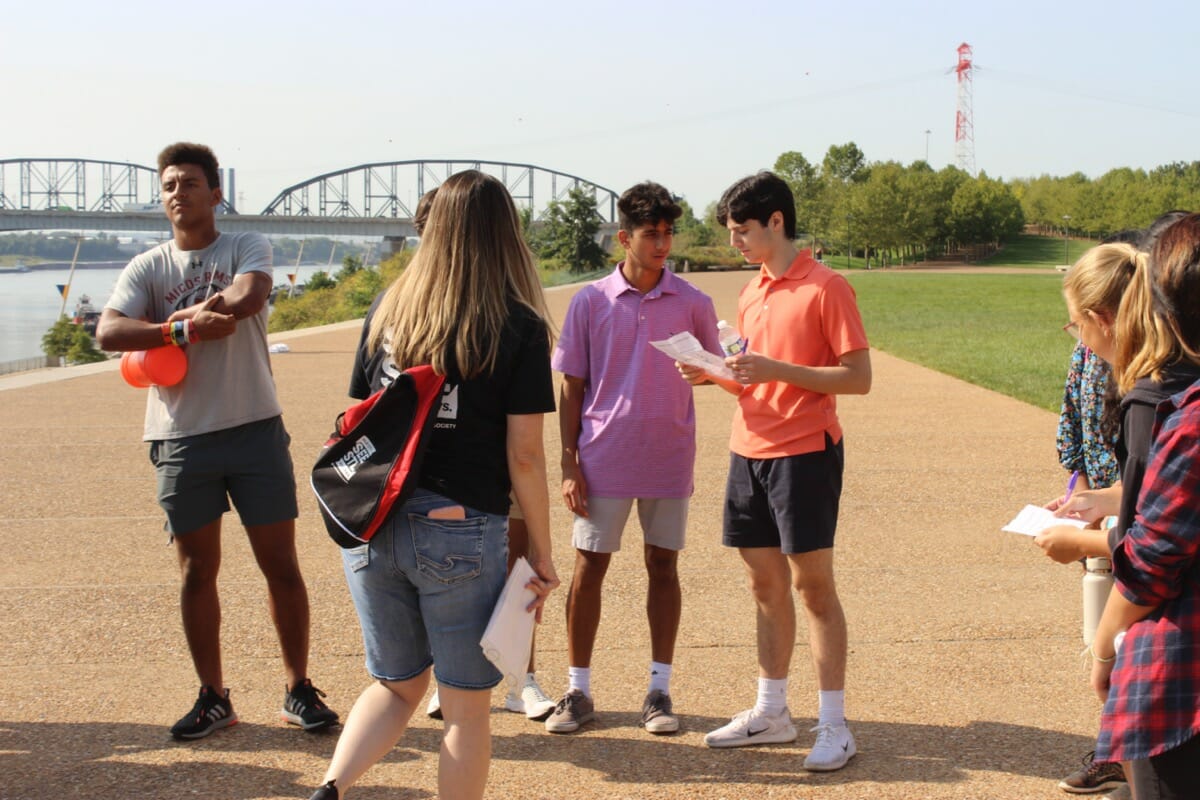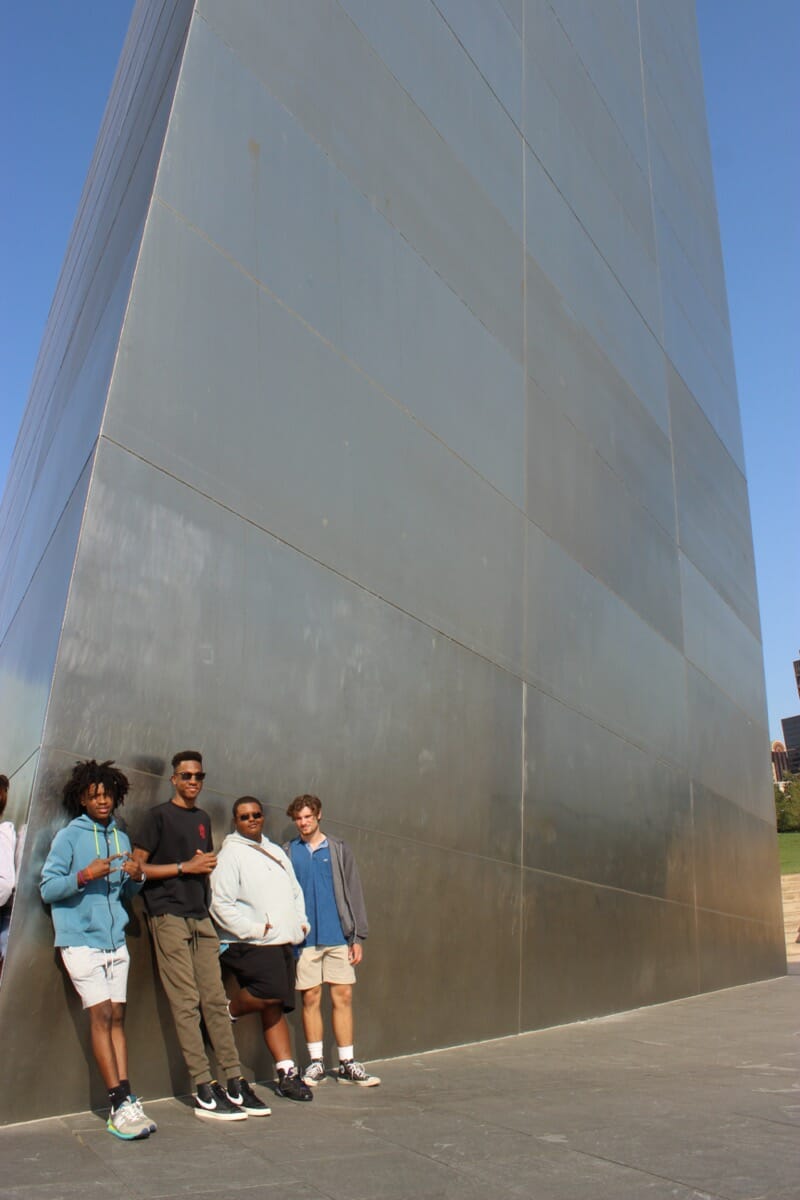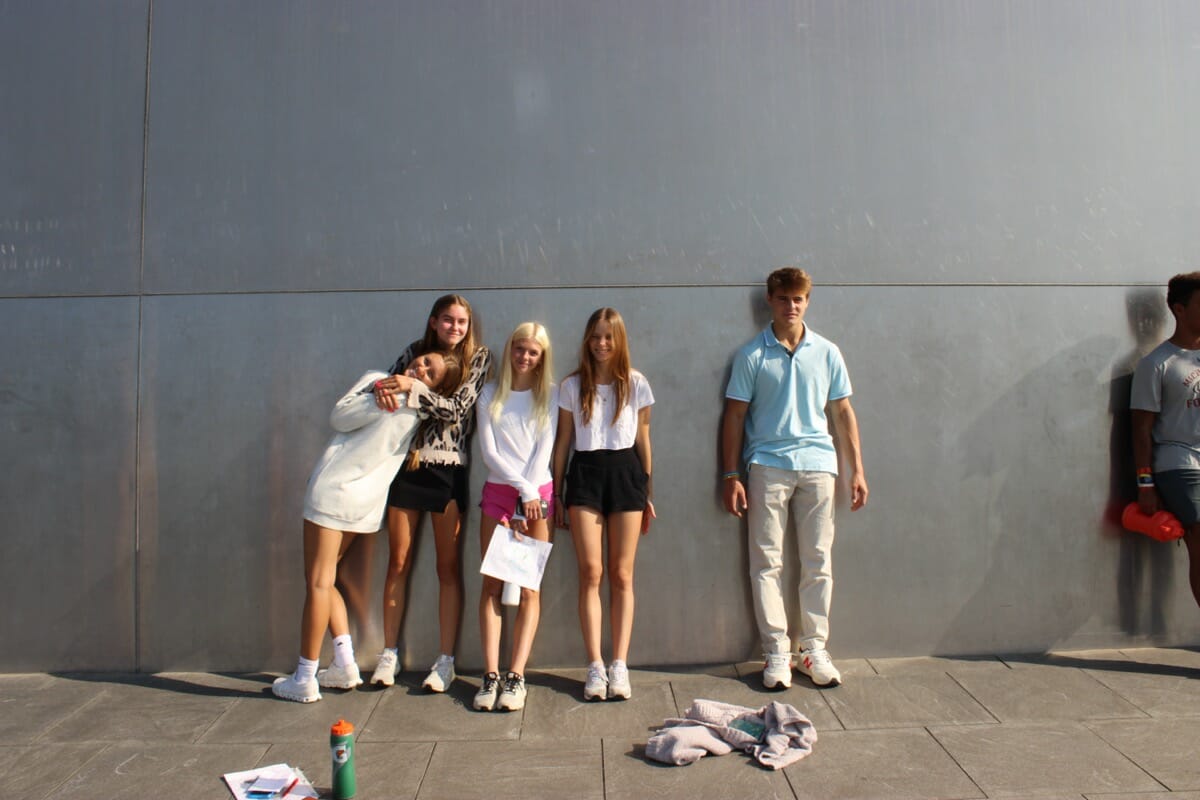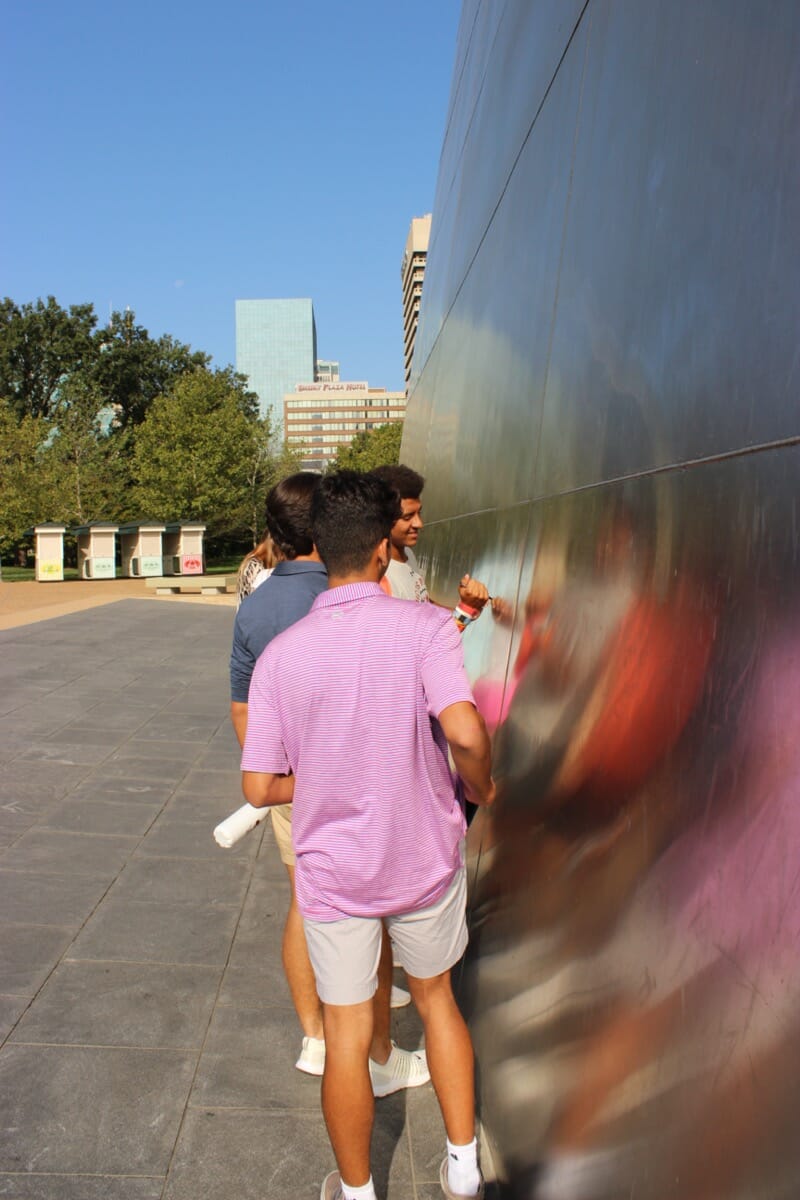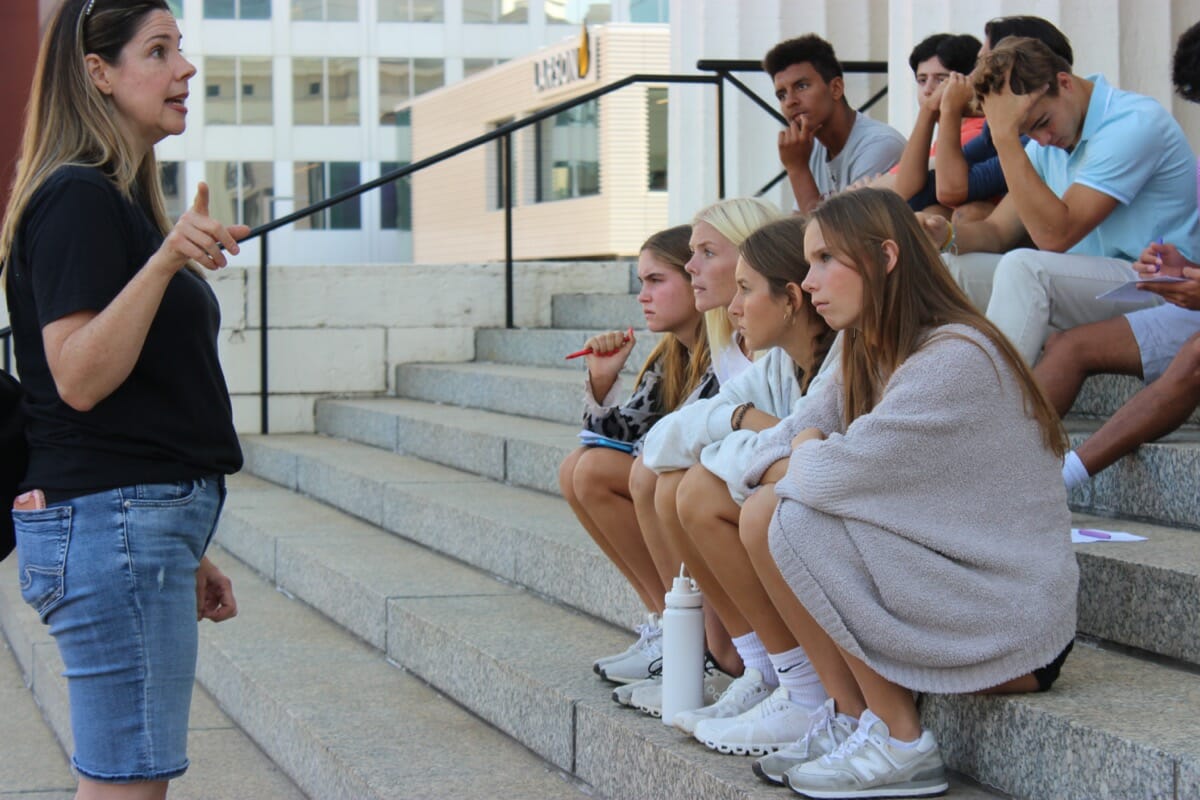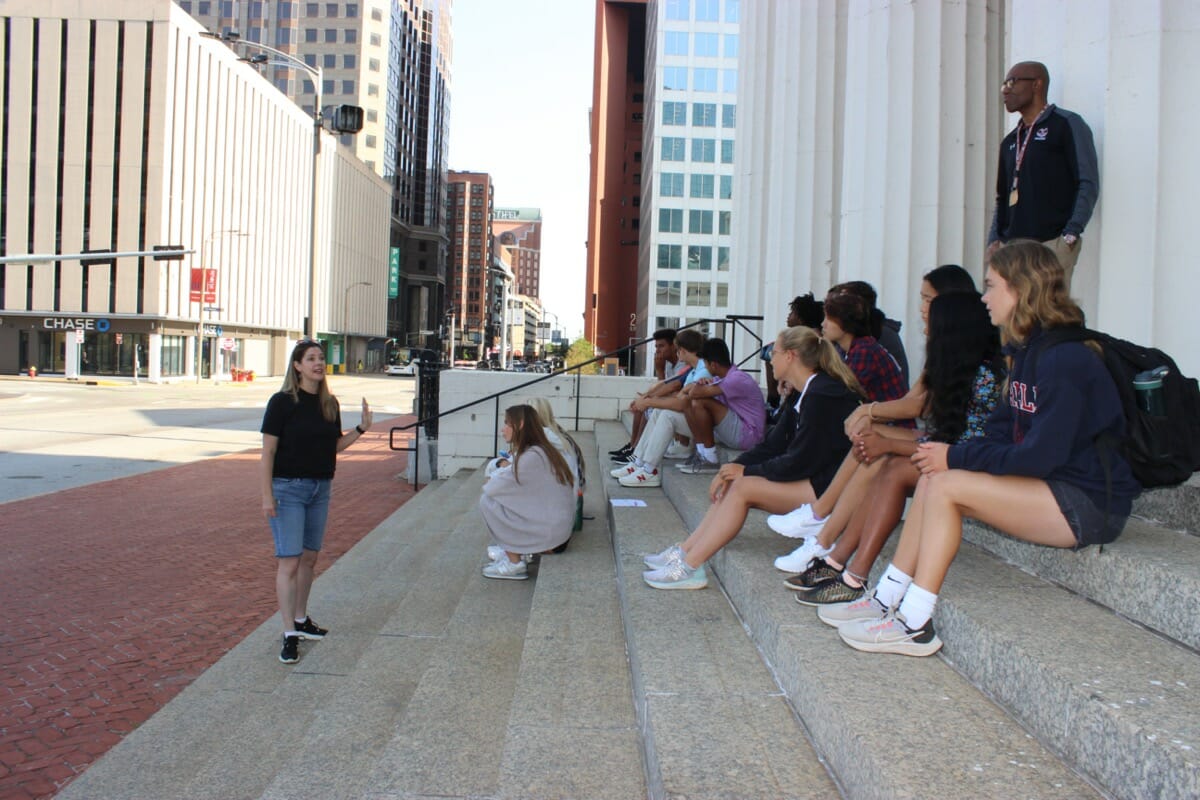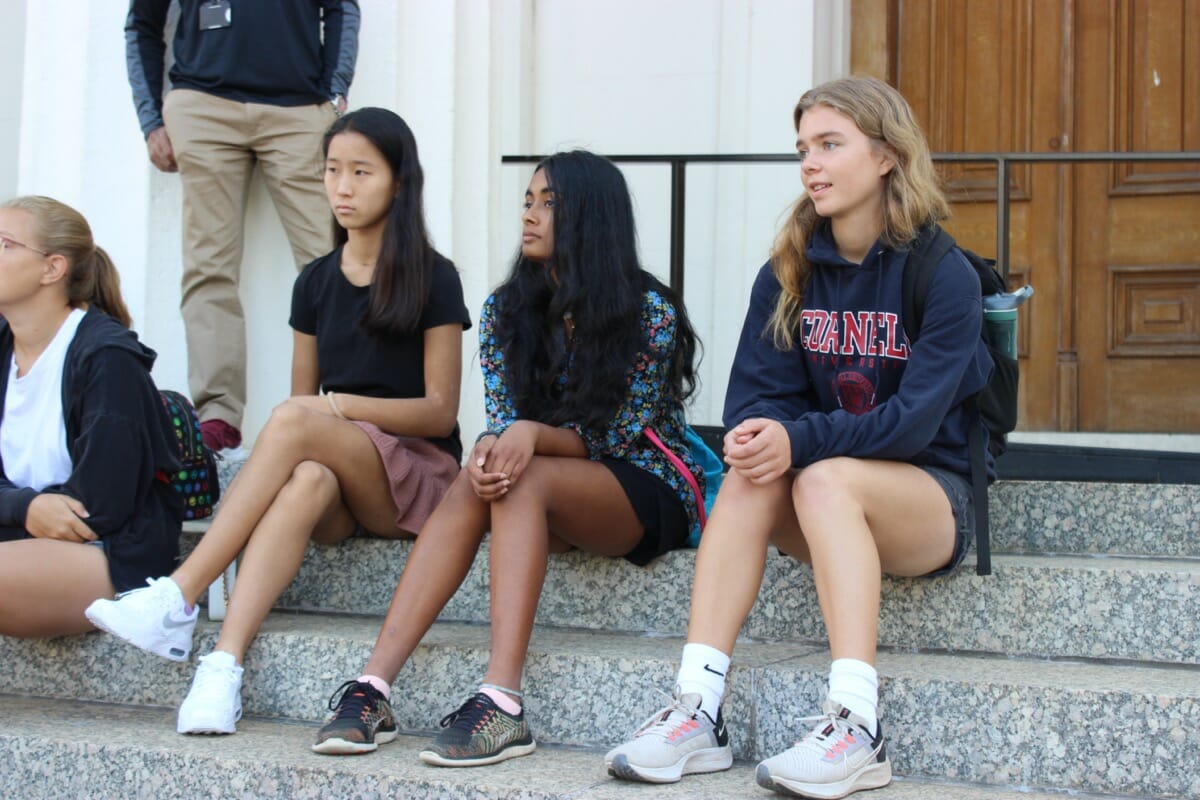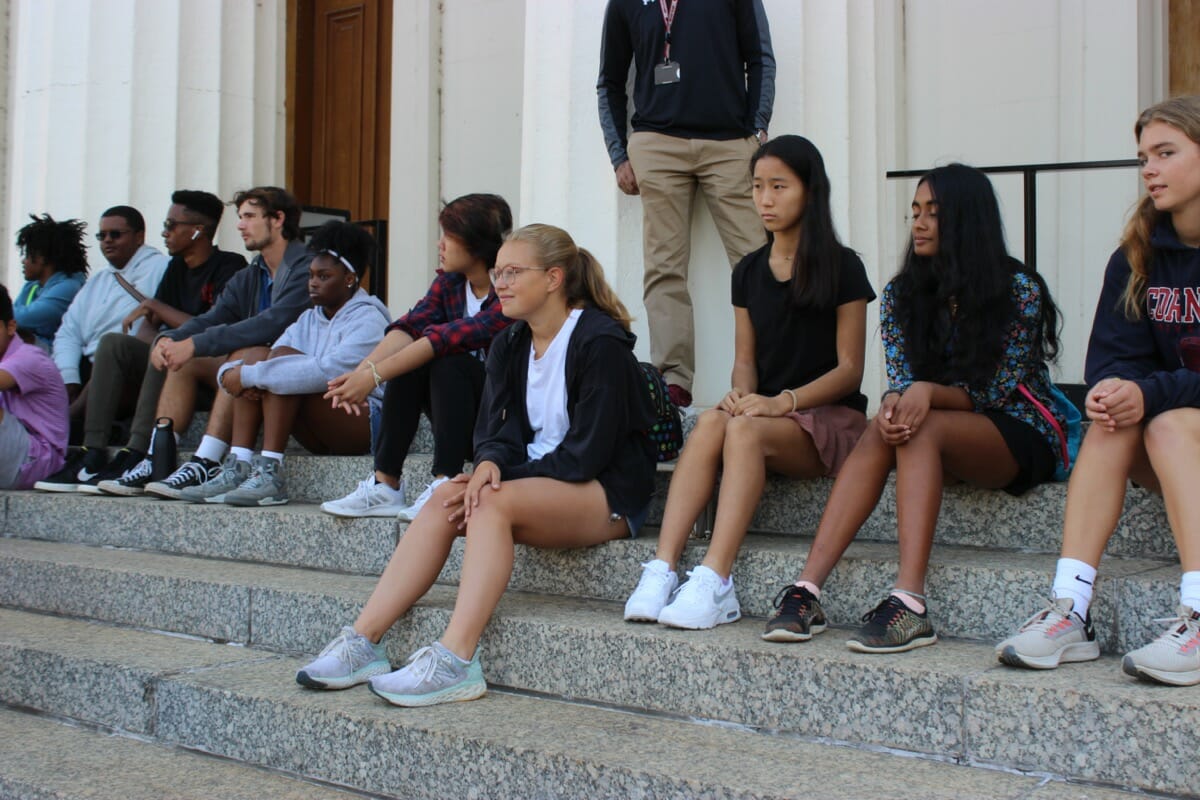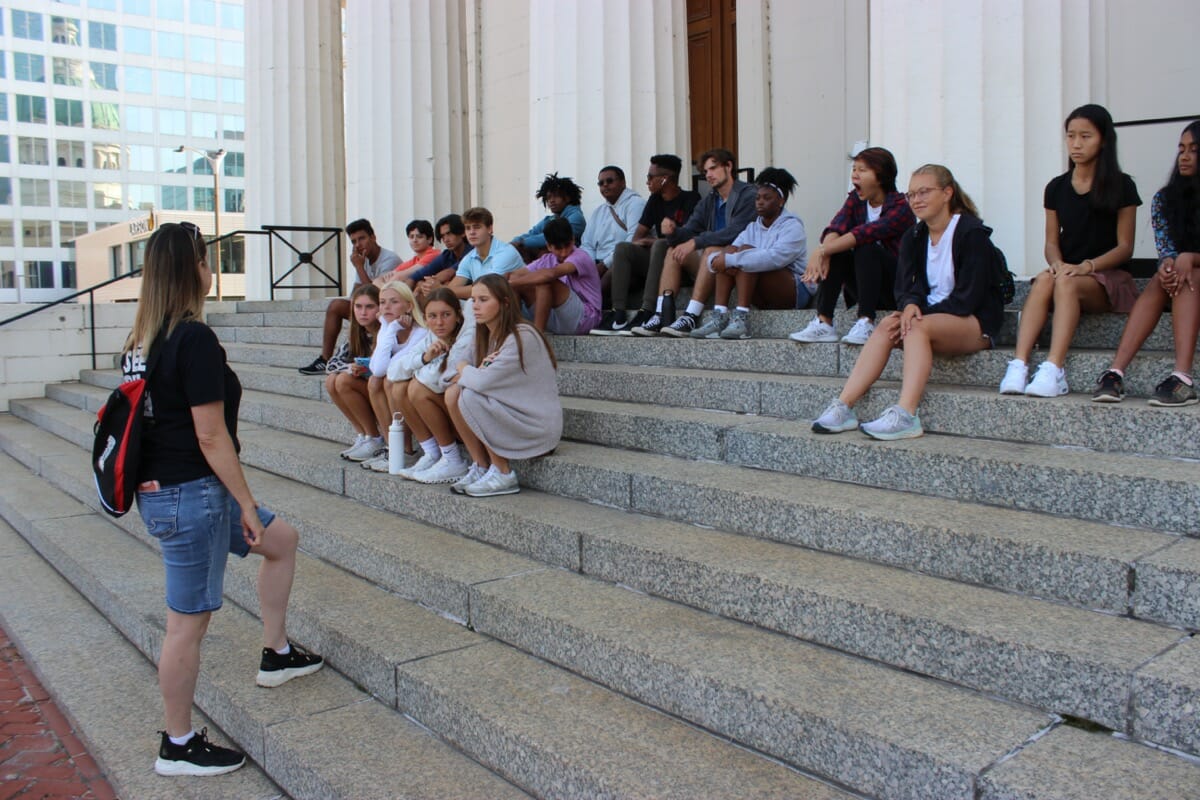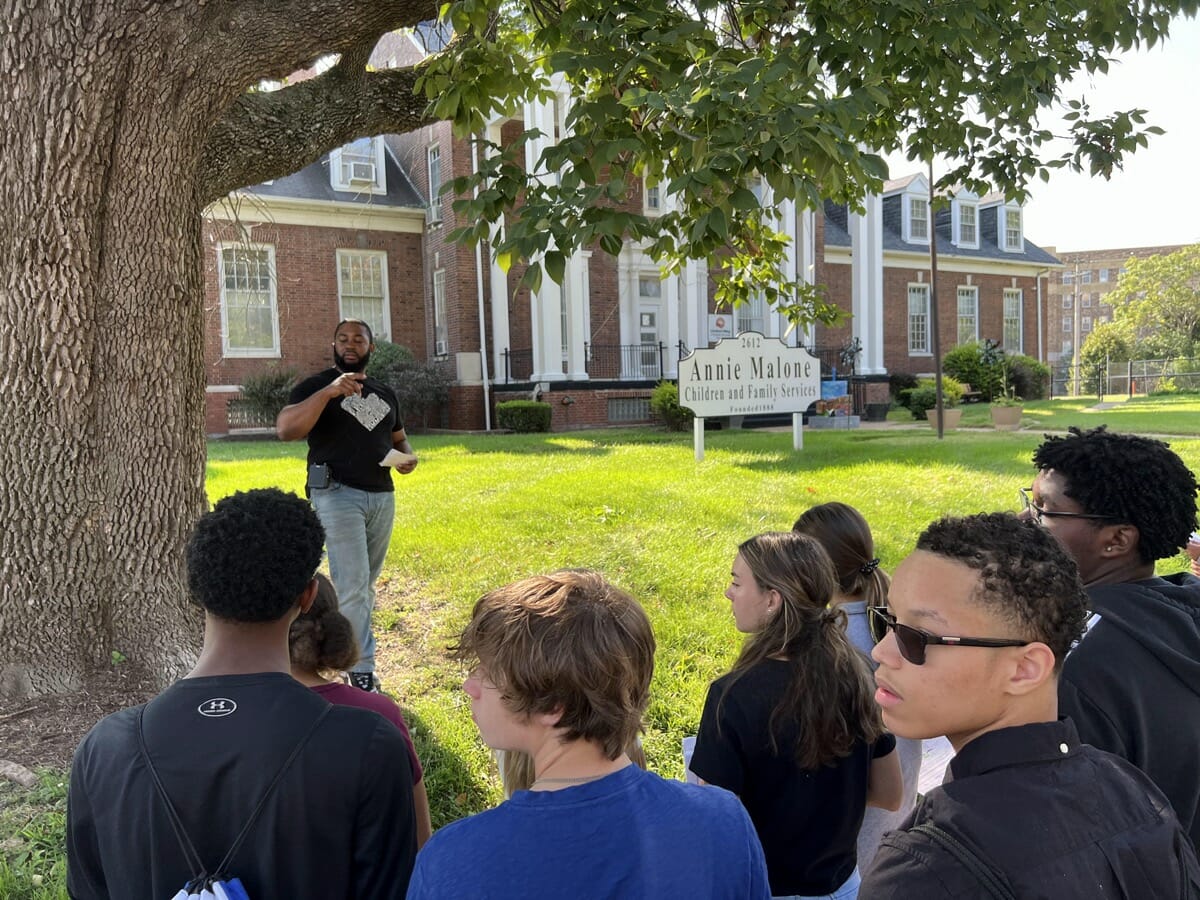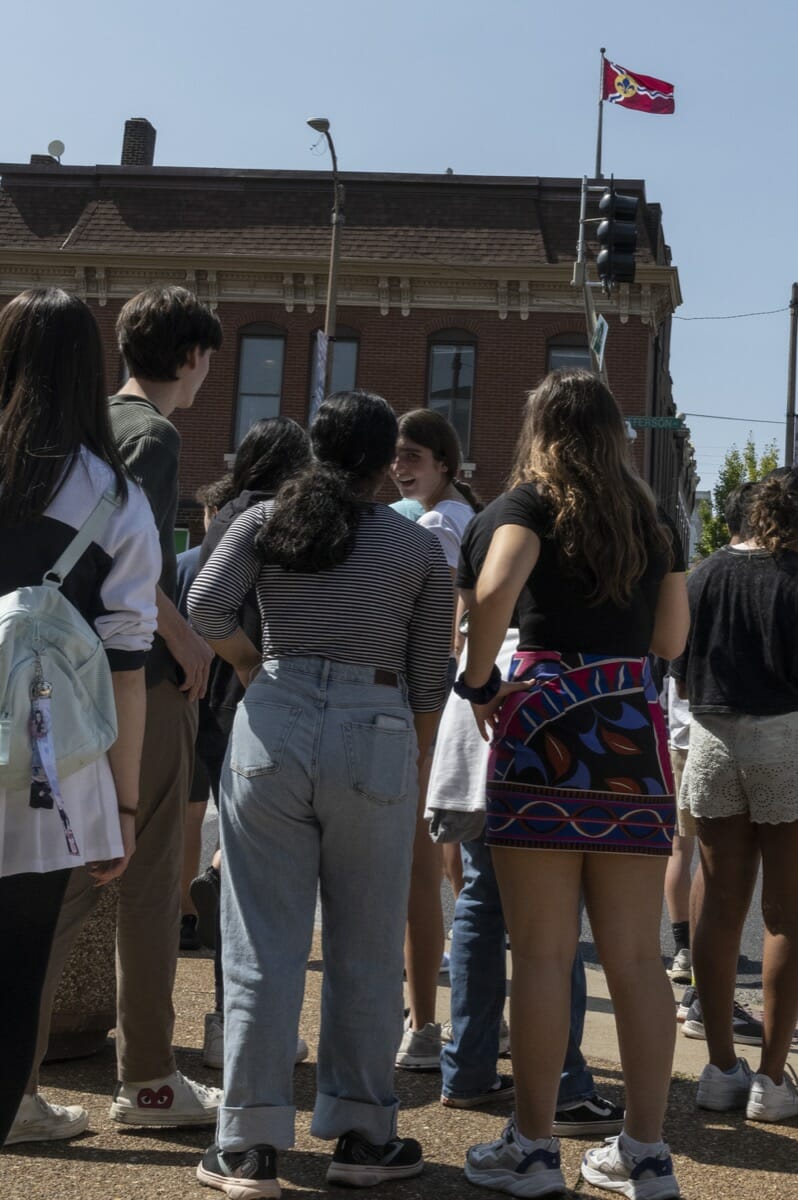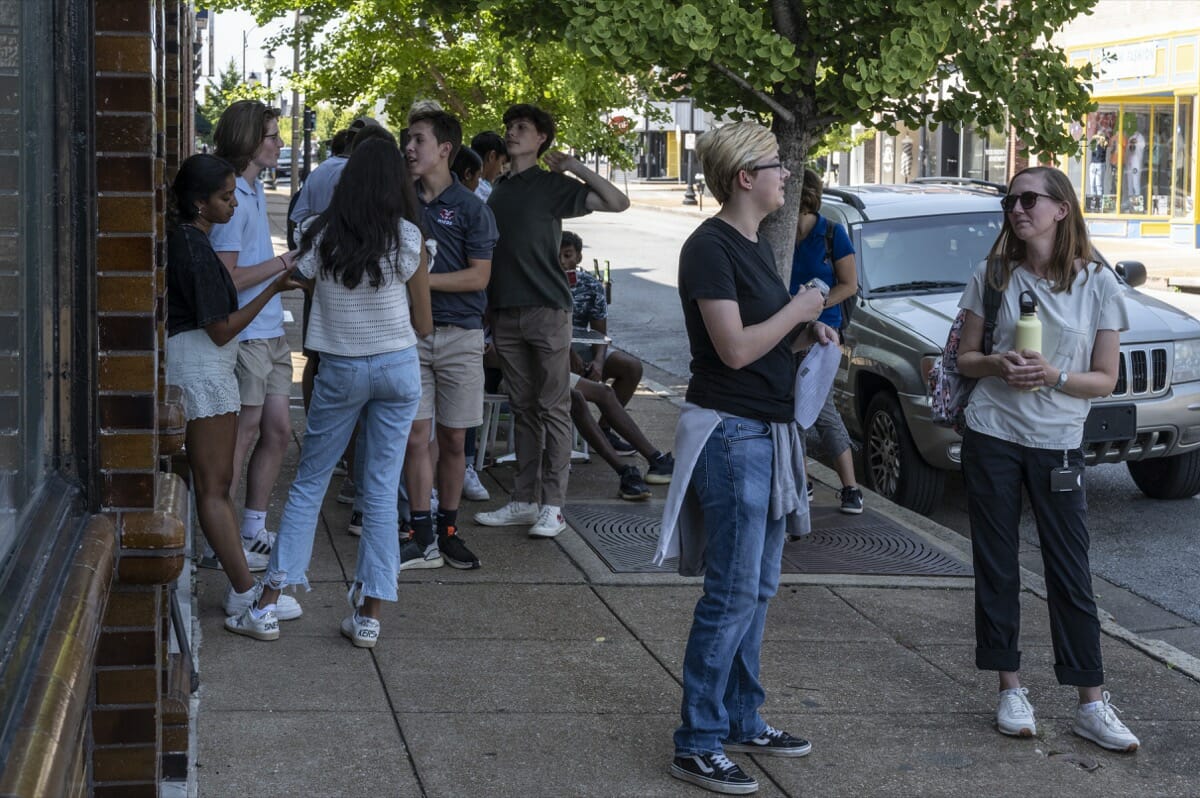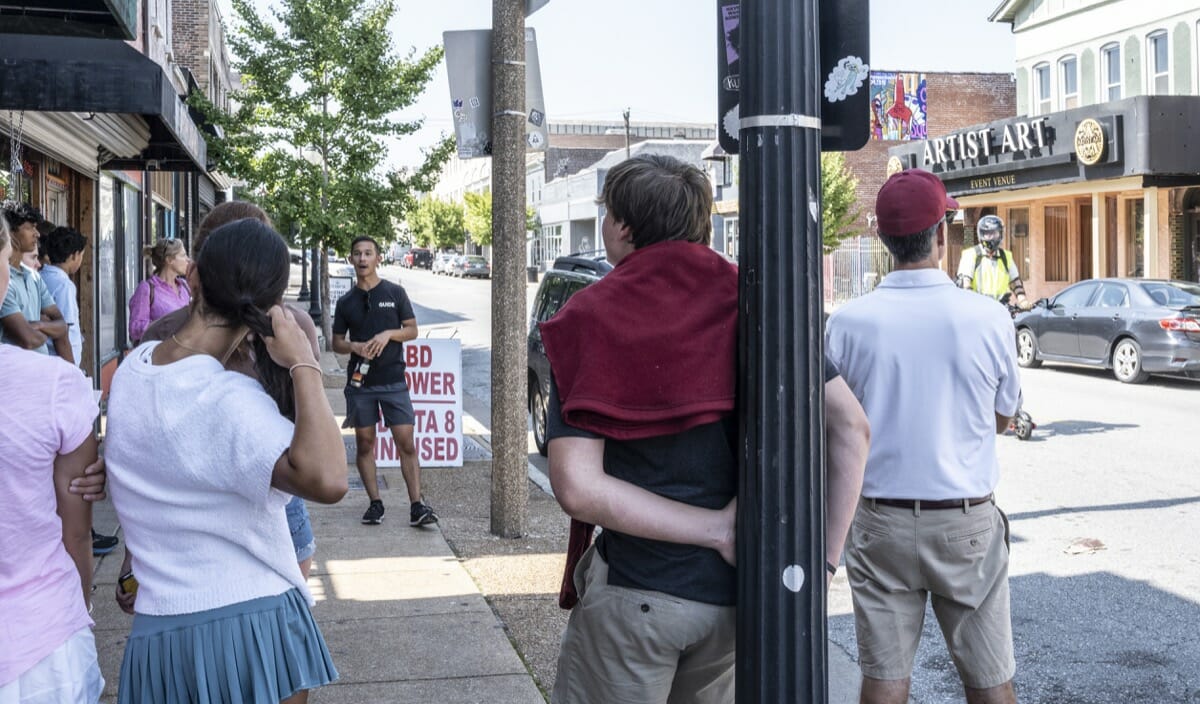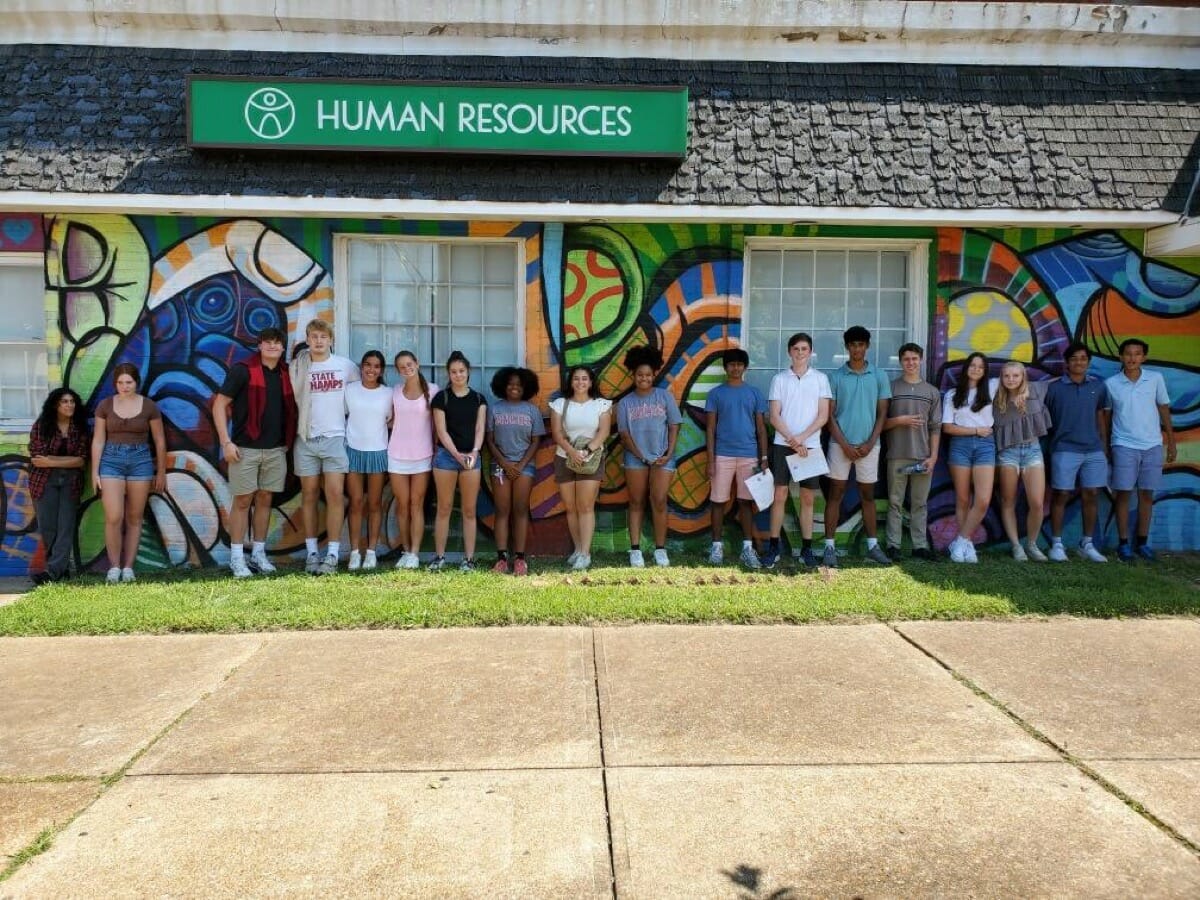On Upper School Community Day, the 11th-grade students, advisors, and six history teachers explored the St. Louis community as an expansion of the History of St. Louis class. The goal of the course, in alignment with the School’s mission, is to help students understand the larger community and the communities in which they live to become more active and engaged citizens.
The History of St. Louis class has existed for four years, but this was only the second time students have participated in a field trip due to a hiatus during the pandemic. It was a welcome opportunity for students to explore history outside the classroom and immerse themselves in the city they call home. To prepare for the field trip, students enjoyed visiting with guest speaker Lindy Drew of Humans of St. Louis, an organization dedicated to telling the stories of individuals all over the St. Louis metro area. Then the 11th-grade teaching team partnered with the Missouri History Museum to take the entire junior class on a bus tour led by museum tour guides. They traveled through the central corridor, South St. Louis, Dutchtown, South Grand, Old North, and St. Louis Place. After a festive and delicious lunch at the City Foundry STL in Midtown, students could choose one of four neighborhoods for a walking tour: downtown, Soulard, The Ville, or Cherokee Street.
JK-12 History Department Chair Carla Federman said, «In the classroom, we’ve been looking at St. Louis past and present, thinking about the different parts of our region, city, and county. We hope that by experiencing parts of the city they are less familiar with, students will understand its different aspects, form new ideas, and find places and histories they want to return to.»
During the tours, students were encouraged to observe what information they were gaining about the city and to note items such as what has changed, how it has evolved, where they see population density, and where they don’t. Additionally, since urban studies frame the class, what the students unpack about St. Louis can be applied to other cities they might want to explore. After the trip, students reflected and discussed how their thinking had been changed or reinforced, connected the journey to what they had already discussed in class, and thought about the St. Louis stories they heard along the way.
Lukas Annis ’24 said, «Our tour guide helped us see a large amount of community that exists in many places on the decline. I had originally thought that the reasons these places were like that in the first place were due to the lack of care for them, but I realized today that a lot of people actually care for their communities so much. While on the tour, we saw many people, and almost everyone we saw they were all speaking to each other or us. I didn’t realize how few people in my community speak to each other, we maybe give each other a look or nod, but in The Ville, everyone was starting a friendly conversation.»
Samruddh Singh ’24 enjoyed the tour of downtown St. Louis and felt impacted by more than the traditional city landmarks such as the Arch and courthouse, «It has statues of important people who cannot be forgotten such as Dred and Harriet Scott, Frankie Muse Freeman; all of them fought for a cause to end oppression against a certain group of people.»
Kamryn Reed ’24 compared what she learned in class about the success of St. Louis through infrastructure urbanization and economic growth and how years later that impacted black communities, «Revitalization of minority communities and taking care of the history of The Ville are challenges that St. Louis needs to address and give attention to because these areas deserve it the most after everything done by the government to get them into a rough condition.» She also shared her own personal connection to this area, «My great-grandparents lived in The Ville for much of their lives, and my great-grandmother babysat Tina Turner when she was young. Unfortunately, the decline of The Ville due to policies implemented and the lack of funding for the area caused my great-grandparents to move out of The Ville and into East St. Louis when my grandmother was a child. Knowing that my family is connected to a legend like Tina Turner is super cool, but seeing all of the deterioration and hearing about how the government treated the area changed my perspective and made it really personal to me, knowing that that is where my family came from.»
Ipsi Bhogaraju ’24 shared that the neighborhood bus tour opened her eyes to the vast economic differences between people only blocks away from one another. «If housing occupancy is low in an already underfunded neighborhood, then the schools and public facilities of that neighborhood will not get enough tax money to function properly and will perpetuate the cycle of poverty. One of the questions I had after our field trip to downtown and the greater St. Louis city area is, ‘Who is responsible for the gross economic divide of the city, and how do we remove this divide over time?'»
Jeffrey Ge ’24 commented on the city-county divide, «The City and County divide resulted in contrast of the standard of living between black and white residents in the St. Louis area. The tour allowed me to see the impact of these decisions on a specific neighborhood.»
Ellie Lochhead ’24 said, «I now feel proud to live in a place with so many interesting stories and important places.»
Several juniors commented that they want to advise future participants to pay attention to the tour guides as they provide excellent information, and it’s well worth expanding their knowledge on what they’ve learned in class. In addition, the slate of guest speakers for this class will continue to build on what the students are learning and expose students to the individuals on the front edge of fostering change in the city and how they can be part of that as active and engaged global citizens.
«The goal of any history class is to make history come alive. It allows students to make a connection between their own lives, the city in which they live, and what they’re studying in the classroom. Upper School Community Day gave us an amazing opportunity to do that,» said Federman.
